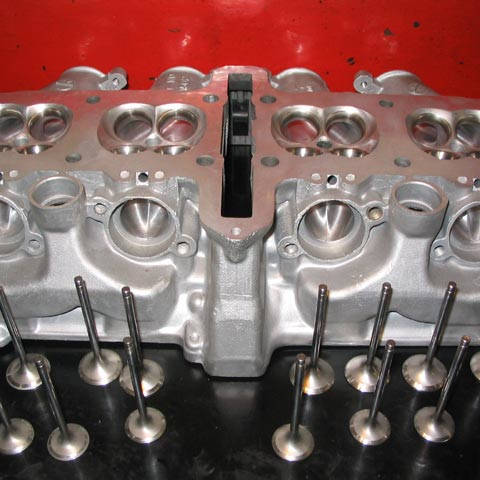GP Performance - Internals

Big bore kits - Will give a large increase in torque through the mid range, but at higher RPM smaller hp gains can be expected, unless you are using larger valve sizes and or performance camshafts as the engine may struggle to fill its larger cylinders.
Camshafts - Can give top end gains but often there will be losses and possibly flat spots at other engine speeds especially if used on an otherwise standard motor.
Higher compression ratio - More power throughout the rev range but can cause pre-ignition especially in the midrange. Can work well with high lift or longer duration cams as increased valve overlap can reduce the trapping effects within the cylinder.
Cylinder head work - Most modern sports bike heads are well designed to give a good compromise between maximum torque and horsepower. It is surprisingly easy to ruin a good head by over-enlarging the ports or removing metal from the wrong area. Larger ports increase gas flow and hp whereas smaller ports will increase gas speed and tend to boost low and midrange torque.
Blueprinting
This is where an engine is stripped and all its components precisely measured and inspected. The engine is then re-built to the manufacturer's exact specification with all its components carefully selected from a large batch of parts, so they are precisely the correct size, fit and weight. They are then inspected for imperfections such as cracks and any casting flashing is removed.
All standard engine components are made within a manufacturing tolerance with items like piston to cylinder, and piston to head clearances set on the side of safety. A piston may be within spec but have a slightly larger diameter or be fractionally taller than its optimum designed size and a cylinder bore slightly tighter or the block shorter than the ideal height, so the factory runs larger tolerances than optimum to avoid problems on their production machines. As power outputs have increased over the last few years the manufacturers have tightened up their production tolerances. Unless you are limited by racing class regulations it can turn out to be a very expensive way to gain modest power increases. Cost unlimited!
